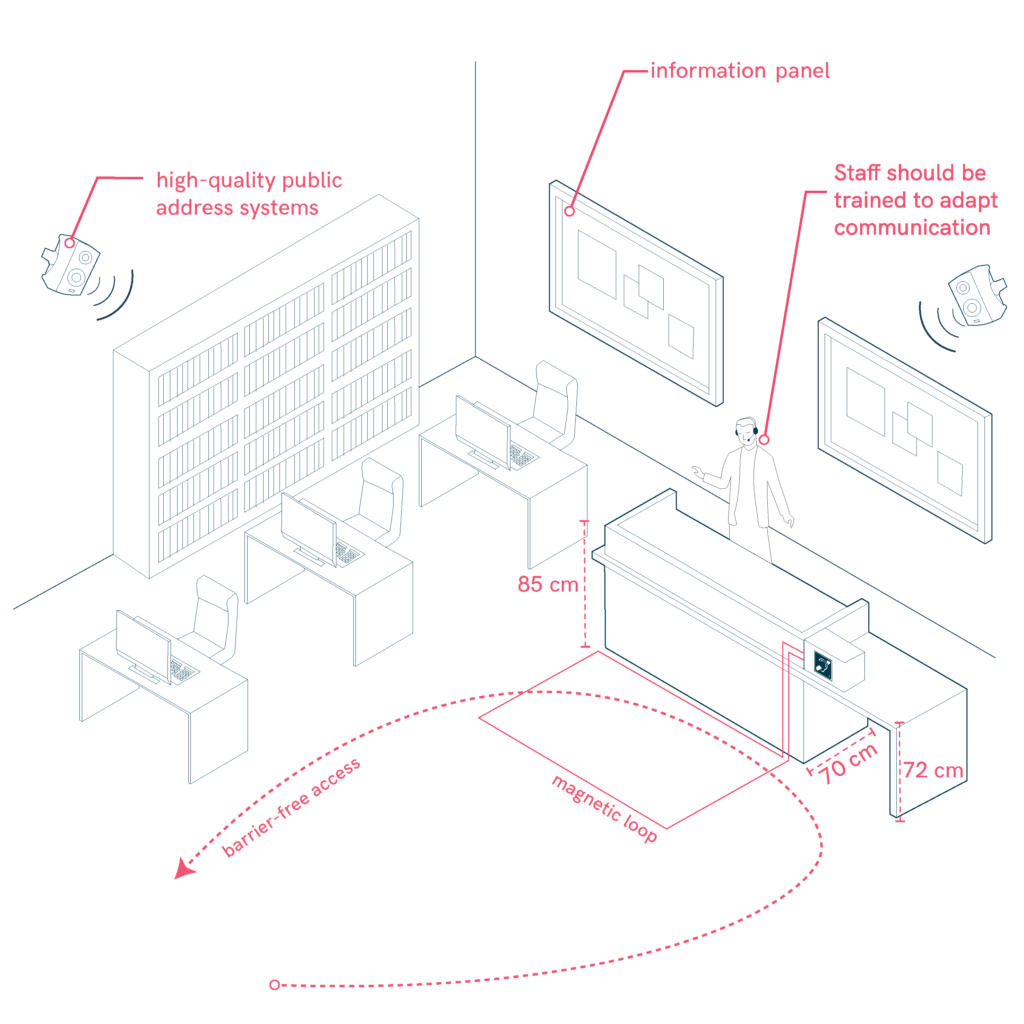Secretary’s Office Accessibility
As a key point of interaction, the secretary’s office should be inclusive for all visitors. Clear communication and ergonomic design improve accessibility and usability. The secretary’s office is a fundamental part of the school, where many people seek information. It must be accessible to all, and staff should be able to communicate effectively with all individuals, including those with disabilities. The reception area will have two different height counters to ensure wheelchair users can access staff easily. Additionally, the furniture should provide sufficient space for people of different heights and wheelchair users. All information will be available in accessible formats, such as large print, Braille, and audio.

- Ensure barrier-free access.
- Provide counters at two different heights.
- Offer information in various accessible formats.
- Install an information panel.
- The secretary’s office should be free of architectural barriers.
- Staff should be trained to adapt communication and respond to the needs of all visitors.
- Public service counters: two heights: 72 cm and 85 cm. Clearance beneath the counter ≥ 70 cm, depth ≥ 50 cm. Free access width to the counter: 80 cm.
- All information should be available in accessible formats, such as hearing loops, text telephones, information panels and signage, high-quality public address systems, and notice boards.
Sources
- https://accessible-eu-centre.ec.europa.eu/content-corner/digital-library/en-172102021-accessibility-and-usability-built-environment-functional-requirements_en
- https://www.miteco.gob.es/fr/ceneam/recursos/materiales/guia-diseno-entornos-escolares.html
- https://www.codigotecnico.org/pdf/Documentos/SUA/DccSUA.pdf
- https://www.cocemfe.es/wp-content/uploads/2020/02/Guia-basica-accesibilidad-centros-educativos.pdf
- https://www.oficinadeaccesibilidaduniversal.es/doc/educativa/centros-educativos/Accesibilidad%20cognitiva%20en%20centros%20educativos.pdf
- https://afaunamuno.org/wp-content/uploads/2023/02/Criterios-Intervencion-EE-30Mar_22.pdf
- Carers
- Children
- Cognitive
- Cognitive abilities
- Decolonial perspective
- Digital
- Digital barrier
- Enviroment
- Environmental
- Gender and generations
- Gender perspective
- Hearing impairment
- Low-education
- Low-income
- Older people
- Other
- Physical abilities and features
- Sensory and Physical
- Socioeconomic
- Visual impairment